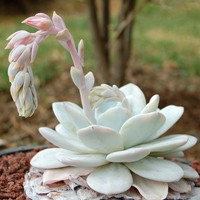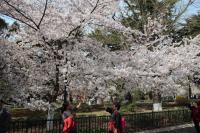How Far Apart to Plant Longleaf Pine Trees
Longleaf pine trees are an iconic species of the southeastern United States, known for their towering height and fine grain. They are also a valuable timber and reforestation crop, prized for their durability and resistance to pests and diseases. If you are considering planting a longleaf pine plantation, one of the most important decisions you will need to make is how far apart to space the individual trees.
The Importance of Proper Spacing
The spacing of longleaf pine trees has a direct impact on their growth rate, size, and overall health. If trees are spaced too closely, they will compete for resources such as sunlight, water, and nutrients, resulting in stunted growth and decreased vigor. On the other hand, if trees are spaced too far apart, they may not form a dense enough canopy to effectively shade out competing vegetation, which can lead to decreased survival rates and increased risk of wildfire.
Factors to Consider
When determining the appropriate spacing for longleaf pine trees, there are several factors to take into account:
Soil Quality: Trees planted in poor quality soil may require more space to access nutrients and water.
Intended Use: If the plantation will primarily be used for timber production, the trees can be spaced closer together. However, if the goal is to maintain a healthy ecological balance, it is important to give each tree enough space to grow to its full potential.
Climatic Conditions: Factors such as temperature, precipitation, and elevation can all impact the growth rate and size of longleaf pine trees, and should be taken into consideration when determining spacing.
Recommended Spacing
The ideal spacing for longleaf pine trees will depend on the specific conditions of your plantation. However, as a general guideline, trees should be spaced between 8-12 feet apart in rows, with at least 12-15 feet between the rows. This allows for adequate sunlight, water, and nutrient access, while also encouraging the formation of a dense canopy that shades out competing vegetation.
It is important to note that these recommendations may vary depending on the intended use of the plantation. If you are primarily interested in timber production, you may be able to space the trees closer together. However, if you are focused on maintaining a healthy ecosystem, it is essential to give each tree enough space to grow to its full potential.
Conclusion
Proper spacing is one of the most important factors to consider when planting a longleaf pine plantation. By taking into account the specific conditions of your site, as well as your intended use and ecological goals, you can determine the ideal distance between trees to promote healthy growth and long-term success. Whether you are new to silviculture or a seasoned forester, careful planning and management of your longleaf pine plantation can help ensure that you achieve your desired outcomes and maintain a thriving ecosystem for generations to come.

 how many times do yo...
how many times do yo... how many planted tre...
how many planted tre... how many pine trees ...
how many pine trees ... how many pecan trees...
how many pecan trees... how many plants comp...
how many plants comp... how many plants can ...
how many plants can ... how many plants and ...
how many plants and ... how many pepper plan...
how many pepper plan...





























